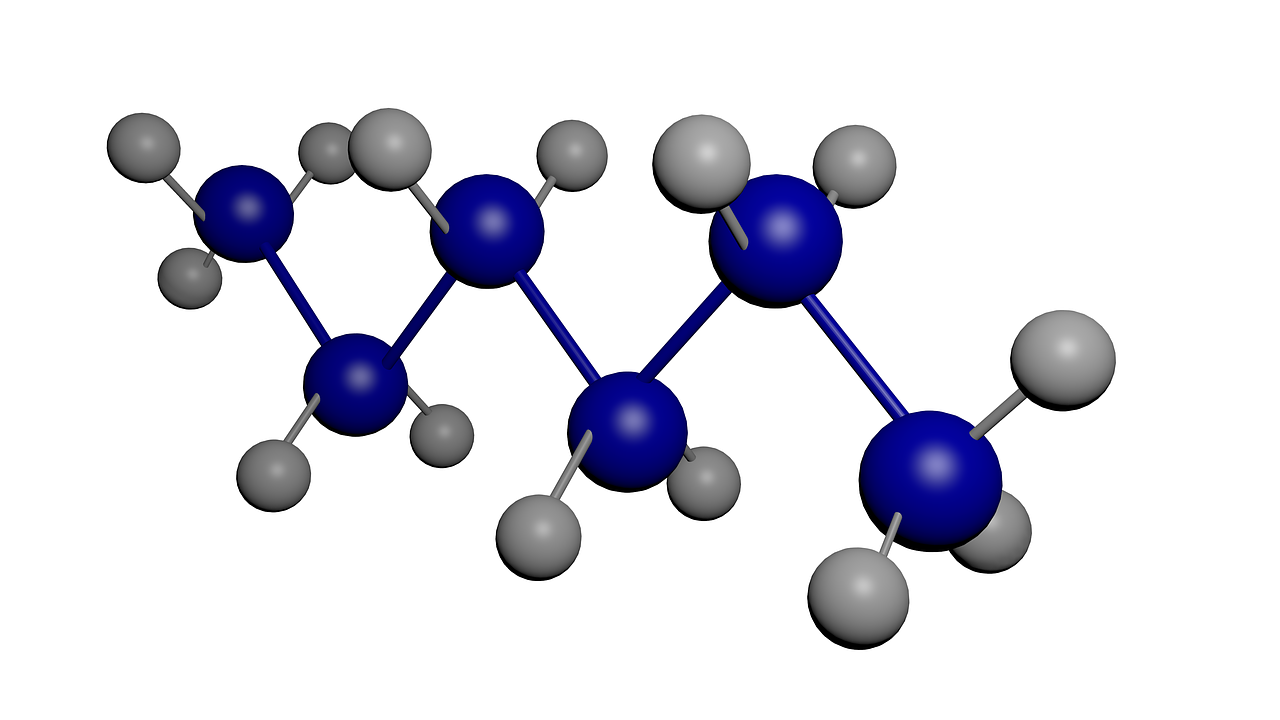Definition: A dipole-dipole force is an intermolecular attraction between the positive end of one polar molecule and the negative end of another polar molecule. These forces arise from the existence of permanent dipoles within polar molecules.
Dipole-dipole forces are important in chemistry because they influence the physical properties of substances, such as boiling and melting points. In molecular interactions, these forces play a key role in determining the behavior of molecules in different environments. Understanding dipole-dipole forces helps scientists predict how molecules interact in solutions and reactions.
This article will explain the dipole-dipole force and its mechanism. It will discuss factors affecting these forces and compare them with other intermolecular forces. Real-world examples and applications will be highlighted. The importance of dipole-dipole forces in chemistry and molecular interactions will also be covered.
Explanation of Dipole Moment:
A dipole moment forms when positive and negative charges in a molecule become separated. This happens in polar molecules where atoms have different electronegativities. The dipole moment quantifies a molecule’s polarity and is depicted by an arrow indicating the direction from the positive to the negative charge.
How Dipole-Dipole Forces Arise:
Dipole-dipole forces emerge from the interaction between the positive pole of one polar molecule and the negative pole of another. These molecular forces occur because polar molecules have permanent dipoles. The alignment of these dipoles creates attractive forces between the molecules. These forces are more robust than London dispersion forces but not as strong as hydrogen bonds.
Examples of Molecules with Dipole-Dipole Forces:
Water (H₂O) is a common example of a molecule with dipole-dipole forces. Hydrogen chloride (HCl) also exhibits these forces due to its polar nature. Acetone (CH₃COCH₃) shows dipole-dipole interactions because of its polar carbon-oxygen bond. These examples highlight the presence of dipole moments and molecular forces in various polar molecules.
Mechanism of Dipole-Dipole Interactions
1. Orientation of Polar Molecules:
Polar molecules orient themselves to maximize dipole-dipole interactions. The positive pole of one molecule aligns with the negative pole of another. This orientation enhances attractive forces between the molecules. Proper alignment is crucial for strong dipole-dipole interactions.
2. Attractive and Repulsive Forces:
Dipole-dipole interactions involve both attractive and repulsive forces. Attractive forces occur between opposite charges of different dipoles. Repulsive forces happen when similar charges are too close. The balance of these forces affects the overall interaction strength.
Strength of Dipole-Dipole Interactions:
The strength of dipole-dipole interactions depends on the dipole moment. Larger dipole moments lead to stronger attractive forces. The distance between molecules also influences the strength. Closer molecules with strong dipole moments create more intense interactions.
Factors Affecting Dipole-Dipole Forces:
1. Electronegativity Differences:
Electronegativity differences between atoms in a molecule create dipole moments. When one atom is more electronegative, it attracts electrons more strongly. This results in a partial negative charge on one atom and a partial positive charge on the other. These dipole moments enhance dipole-dipole forces in polar molecules.
2. Molecular Shape and Symmetry:
Molecular shape and symmetry affect dipole-dipole forces. If a molecule is symmetrical, dipole moments can cancel out, reducing molecular forces. Asymmetrical molecules maintain their dipole moments, resulting in stronger dipole-dipole interactions. The overall shape determines how effectively these forces act between molecules.
3. Temperature and Pressure Influences:
Temperature and pressure can influence dipole-dipole forces. Higher temperatures provide more energy to molecules, weakening these forces. Lower temperatures reduce molecular movement, strengthening dipole-dipole interactions. Pressure changes can also alter the distance between polar molecules, affecting the strength of these molecular forces.
Comparison with outer intermolecular forces
Dipole-Dipole vs. London Dispersion Forces
Dipole-dipole forces differ from London dispersion forces in their origins. Dipole-dipole forces originate from the permanent dipoles present in polar molecules. London dispersion forces are weaker and occur in all molecules due to temporary dipoles. London dispersion forces are generally weaker than dipole-dipole forces in polar substances.
Dipole-Dipole vs. Hydrogen Bonding
Dipole-dipole forces are weaker compared to hydrogen bonding. Hydrogen bonding takes place when hydrogen is attached to highly electronegative atoms such as fluorine, oxygen, or nitrogen. This creates a strong attraction between the hydrogen and the lone pairs of these atoms. Hydrogen bonds exhibit greater strength compared to standard dipole-dipole interactions.
Relative Strength and Significance
Dipole-dipole forces are more intense than London dispersion forces but less powerful than hydrogen bonds. Their strength depends on the size of the dipole moment and the distance between molecules. Understanding these forces helps explain molecular behavior and interactions. Each type of intermolecular force plays a crucial role in determining physical properties and chemical reactions.
Role in Determining Boiling and Melting Points:
Dipole-dipole forces play a key role in determining boiling and melting points. Molecules with strong dipole-dipole interactions generally have higher boiling and melting points. This is because more energy is needed to break these interactions. For instance, water’s high boiling and melting points are due to its strong dipole-dipole forces.
Impact on Solubility and Miscibility:
Dipole-dipole forces affect the solubility and miscibility of substances. Polar substances dissolve well in other polar substances due to dipole-dipole interactions. This is why salt dissolves in water but not in oil. These interactions help explain why some liquids mix well together while others do not.
Importance in Biological Systems:
In biological systems, dipole-dipole forces are crucial for the structure and function of molecules. Proteins and DNA rely on these forces for their specific shapes and functions. They help in the formation of enzyme-substrate complexes and in maintaining the structure of cell membranes. Understanding these forces is essential for studying biochemical processes and drug interactions.
Techniques to Measure Dipole-Dipole Interactions:
Several techniques are used to measure dipole-dipole interactions. These include methods that directly assess molecular forces and interactions. Experimental measurement often involves analyzing how molecules interact in various conditions. Accurate measurements help understand the strength and nature of dipole-dipole forces.
1. Spectroscopy and Crystallography Methods:
Spectroscopy is used to study dipole-dipole interactions by analyzing the absorption and emission of light. This method provides insights into molecular structure and behavior. Crystallography involves studying the arrangement of atoms in a crystal. It helps in observing how dipole-dipole forces influence molecular structures.
2. Computational Modelling:
Computational modeling simulates dipole-dipole interactions using advanced algorithms. This method allows researchers to predict molecular behavior and interactions. By modeling different scenarios, scientists can understand how dipole-dipole forces affect various properties. Computational modeling complements experimental data and enhances our understanding of molecular forces.
Frequently Asked Questions:
-
What exactly are dipole-dipole forces in chemistry?
Dipole-dipole forces are a type of attraction between molecules. They happen when one molecule has a slightly positive end and a slightly negative end, like a tiny magnet. These positive and negative ends attract each other, making the molecules stick together a bit. Dipole-dipole forces help hold molecules close and affect things like melting and boiling points.
-
How do dipole-dipole forces differ from other intermolecular forces?
Dipole-dipole forces are different from other forces because they happen between molecules with positive and negative ends. Other forces, like London dispersion forces, happen in all molecules, even if they don’t have positive and negative ends. Hydrogen bonds are another type, but they are stronger and only happen when hydrogen is involved. Dipole-dipole forces are in the middle—they’re not the weakest, but they’re not the strongest either.
-
What factors determine the strength of dipole-dipole interactions?
The strength of dipole-dipole interactions depends on two main factors:
- Polarity: If a molecule has a strong positive and negative end, the dipole-dipole forces will be stronger. The more polar the molecule is, the stronger the attraction between its ends.
- Distance: If the molecules are close together, the dipole-dipole forces will be stronger. The closer they are, the more they can pull on each other.
So, stronger polarity and shorter distance make dipole-dipole interactions stronger.
-
Why do polar molecules exhibit dipole-dipole forces?
Polar molecules are like tiny magnets with a positive side and a negative side. The positive end of one molecule draws in the negative end of a different molecule. This attraction between them is called dipole-dipole forces, and it helps the molecules stick together.
-
How do dipole-dipole forces affect the physical properties of substances?
Dipole-dipole forces affect how substances behave. They make molecules stick together more, which can make a substance harder to melt or boil. For example, if dipole-dipole forces are strong, the substance might have a higher melting or boiling point. These forces help decide if something is a solid, liquid, or gas at room temperature.
-
Can dipole-dipole forces exist between nonpolar molecules?
No, dipole-dipole forces can’t exist between nonpolar molecules. Nonpolar molecules don’t have a positive and negative end, so they can’t attract each other this way. Dipole-dipole forces need a positive and negative side to work, which nonpolar molecules don’t have.
-
How do dipole-dipole forces influence the solubility of compounds in different solvents?
Dipole-dipole forces affect how well compounds dissolve in different solvents. If a compound has dipole-dipole forces and is put in a solvent that also has these forces, it will dissolve better. This is because the positive and negative ends of both the compound and the solvent can attract each other. But if the compound and solvent don’t have dipole-dipole forces, the compound might not dissolve well.
-
What is the relationship between dipole moments and dipole-dipole forces?
The dipole moment is a measure of how strong the positive and negative ends of a molecule are. Dipole-dipole forces are the attractions between these positive and negative ends of different molecules. The stronger the dipole moment, the stronger the dipole-dipole forces will be, making the molecules stick together more. So, a bigger dipole moment means stronger dipole-dipole forces.
-
How do temperature changes affect the strength of dipole-dipole forces?
When the temperature changes, it can affect dipole-dipole forces. If the temperature goes up, the molecules move faster and bump into each other more. This can weaken the dipole-dipole forces because the molecules are moving too quickly to stick together as strongly. When the temperature goes down, the molecules move slower and stick together better, making the dipole-dipole forces stronger.
-
Why are dipole-dipole forces important in biological molecules like proteins and nucleic acids?
Dipole-dipole forces are important in biological molecules like proteins and nucleic acids because they help these molecules stick together and form their shapes. In proteins, these forces help the protein fold correctly so it can work properly. Nucleic acids, like DNA, help hold the two strands together in the right shape. Without dipole-dipole forces, these molecules wouldn’t work properly in our bodies.
Conclusion:
In summary, dipole-dipole forces are crucial for understanding molecular interactions. These forces arise from the attraction between polar molecules and play a significant role in determining boiling points, melting points, and solubility. They impact chemical reactions and solution chemistry, influencing reaction rates and equilibria.
Dipole-dipole forces are important across various fields, including chemistry and biological systems. They help explain the behavior of molecules in different environments and are essential for predicting how substances interact. Understanding these forces enhances our knowledge of molecular interactions and their applications.
In final thoughts, dipole-dipole forces are a fundamental concept in chemistry. They provide insights into how molecules interact and affect physical and chemical properties. Recognizing their importance helps in various scientific and practical applications.



This article resonates perfectly! Find perfection in Sprunki Game.